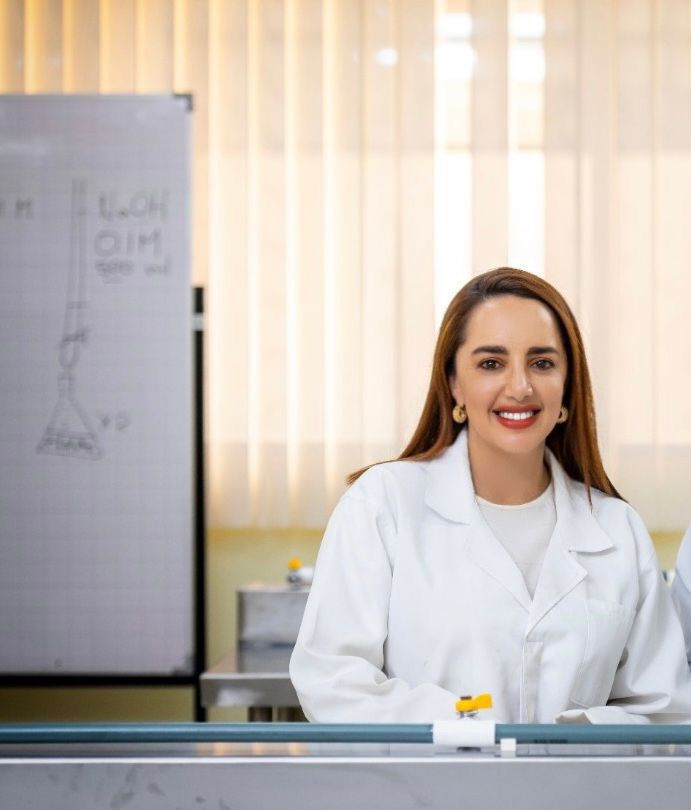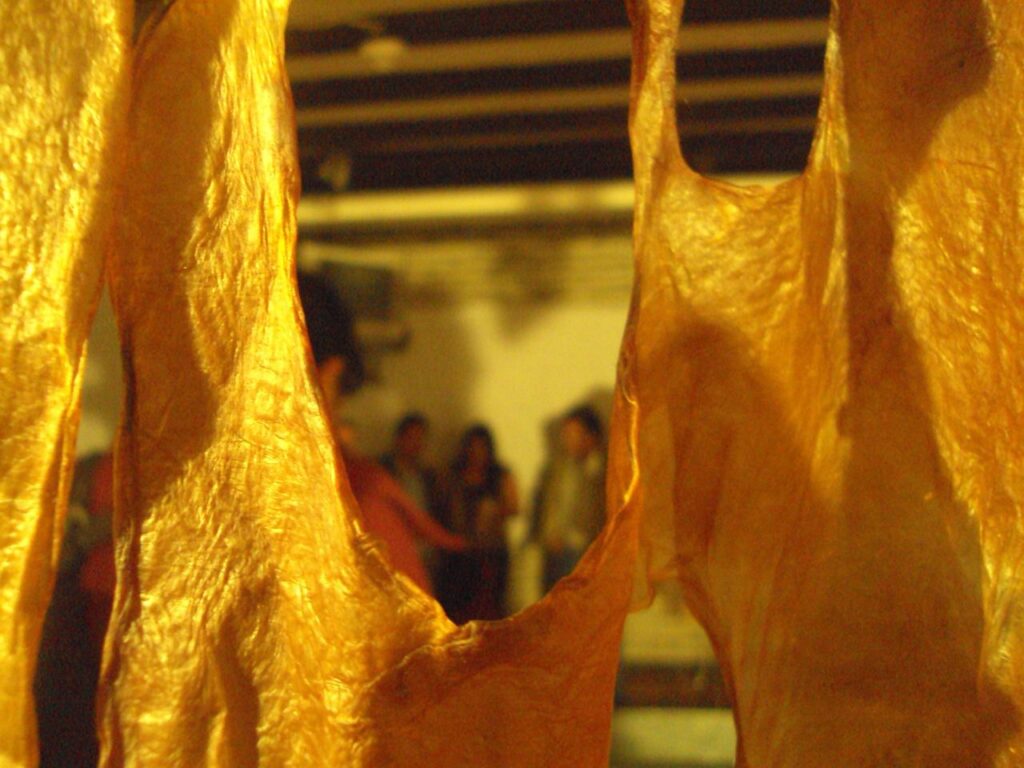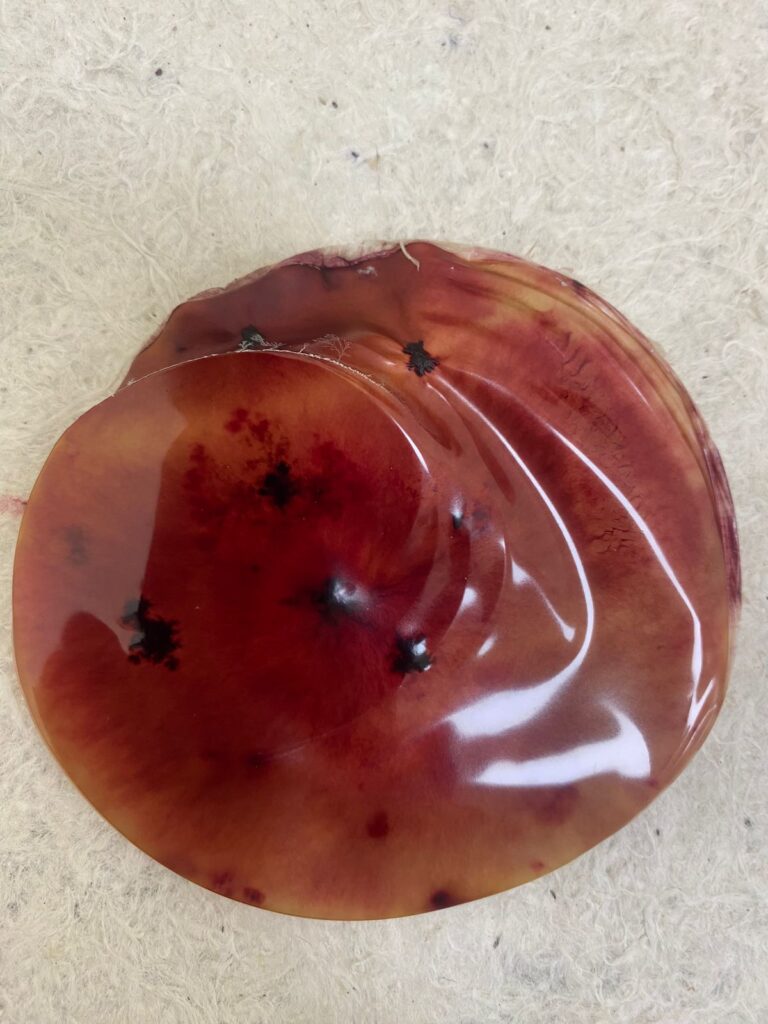Bioart and research make up a field with several artistic practices that open possibilities to generate knowledge. In Bioart, biology, and art are combined to create, research, and express artistic languages and sometimes design answers to specific needs of society. In this sense, scientific research for the development of biomaterials connects the arts with science.

How she started her research
More than ten years ago, Dr. Gabriela Punín, a professor at the Universidad Técnica Particular de Loja, began her research in bio art and biomaterials. Her first result was to obtain natural fiber paper. That is, she obtained paper from short-cycle waste plants. To do this, he investigated more than 60 short-cycle plants to find those that do not affect nature. This research involved deepening knowledge about fibers, handling, cultivation, and cleaning of fibers, and the most important dimension: finding possibilities that do not impact nature.
His first discovery: banana paper.
From this initial process, Punín obtained banana paper, made from the banana stalk, which is the fraction of the plant that supports the whole banana. For some banana companies in Ecuador, it is a waste management problem. This occurs because they export the bananas, but they keep the waste from the head, which is the banana bunch. In some cases, this can be used as fertilizer, but since the quantity is very large, it is not always possible to use it. In addition, since Punín has a patent for the recycling of the banana bunch to make a biodegradable cardboard fiber, she was also able to patent a biodegradable cardboard for the banana industry and for banana exports.
Likewise, Punín made onion paper with waste from several Ecuadorian restaurants. With these first results in paper, its applications were utilitarian objects, such as lamps, and art. To test the time it took for these materials to become biodegradable, she planted the palo santo mushroom, which degraded very quickly, in about a month. So began her work with fungi.

A skin designed from kombucha
Then came the research with the kombucha liquid. Over many years of research and experimentation, Punin learned to see what was the best medium for the skin to come out in the best way. So what he did was to determine the ideal medium for it to grow. That is the temperature and the pH.
Kombucha is a commercially used beverage, however, she collected it and sowed the inoculum which is a concentration of microorganisms to form a microbial consortium with fungi, bacteria, microbes, and yeasts. In this way, a cellular tissue is formed that becomes a biopolymer. From this experience, the researcher also patented the process and now uses it as a support for her artistic work. In addition, she transferred the patent to a designer who uses it in handbags and shoes. Currently, another of the uses of this skin is the sutures made during medical students’ internships.

The discovery of biodegradable plastic
Punín’s findings did not stop there, because she also discovered a biodegradable, flexible plastic, with which she won the gold medal in the category of Inorganic Chemistry at the Taiwan Inotech Expo 2022 World Fair of Inventions. This biopolymer development was made from cassava starch and banana peel. She transferred her patent to South American Exportation for export fruit wrappers. That is a formula with which she won for innovation and use with the patent transfer. In the world, a normal plastic degrades between 100 and 300 years, and the biopolymer that Punín created degrades in three months, in contact with compost. Another interesting detail is that low temperatures are used for its production, which means that energy consumption is lower. In this way, the industry does not invest in energy.
Research and artistic processes
In the case of the researcher, laboratory work is also therapeutic, to the extent that her dedication to bio-art and research has become a process of playing and experimentation. The biopolymer resulting from her research work has been transformed into skin, a substrate for her artistic works that have traveled to multiple international exhibitions in London, Lisbon, Mexico, Chile, Peru, and Ecuador. As she says, it is a skin in which she has been able to capture her pain, experiences, wounds, and personal scars. This has become the material she loves, the canvas on which she has captured everything she feels.
If you are interested, you can learn about options for ecological materials that minimize environmental impact.





